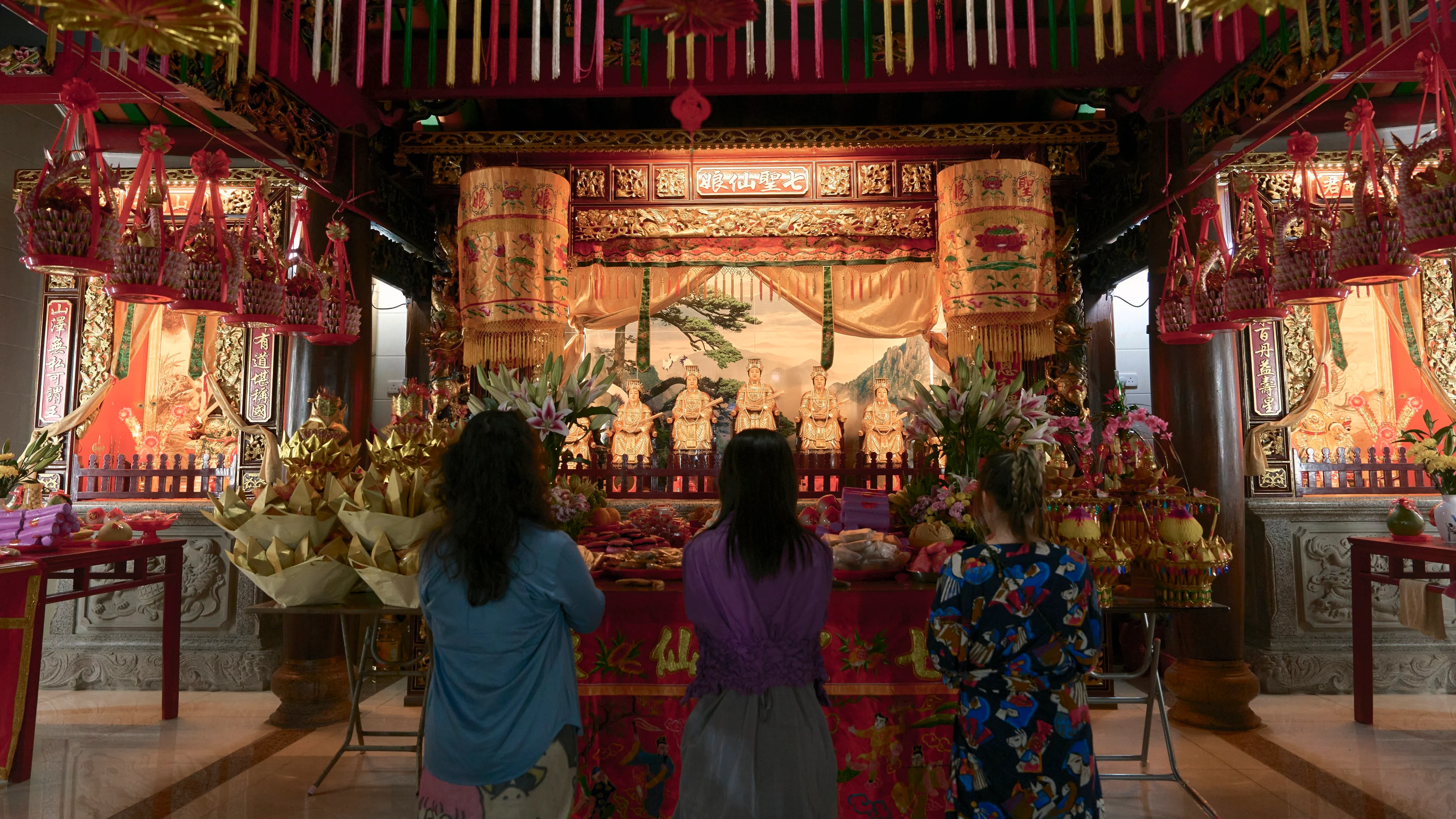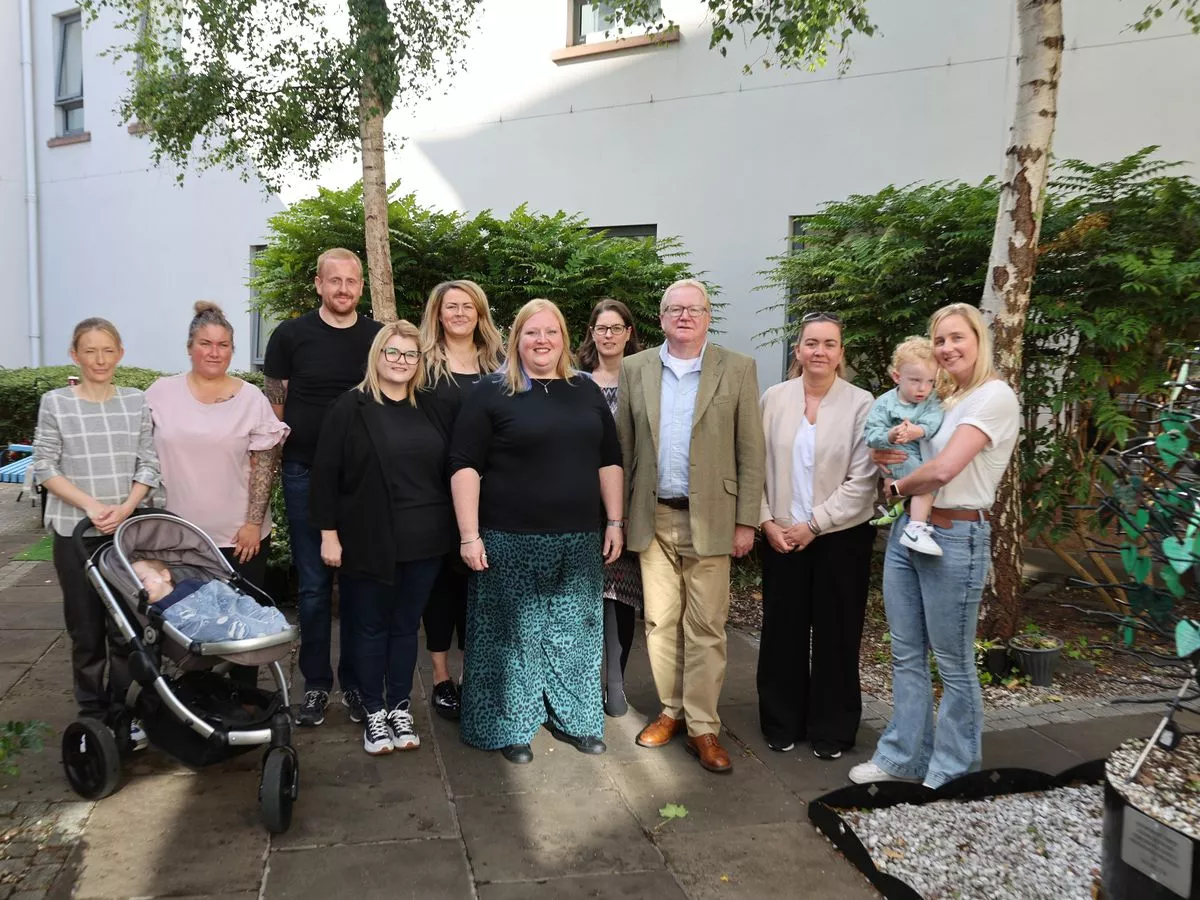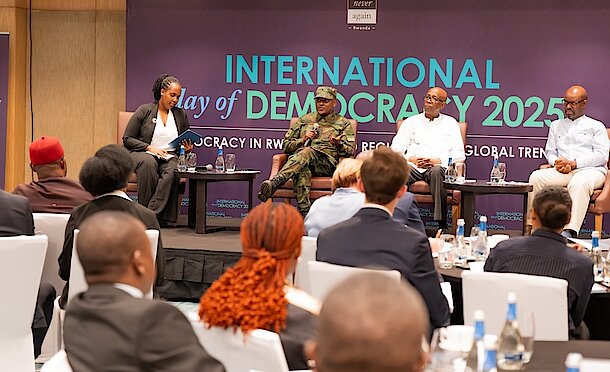By Kylie Knott
Copyright scmp

South Korean artist Mooni Perry is fascinated by the rites and rituals surrounding Asian folklore festivals, especially when they have a strong female focus.
Her passion for the subject lured her to Hong Kong where, for the past three months, she has been artist in residence at the Centre for Heritage, Arts and Textile (Chat), a non-profit in Hong Kong’s Tsuen Wan district.
Perry’s research explores the cultural significance of female communities and rituals in Hong Kong and nearby regions, with one popular Chinese legend – the story of the Seven Fairies, the seven celestial daughters of the Jade Emperor and Queen Mother of the West – fuelling much of her work.
What she discovered is that the beliefs surrounding this ancient tale – it has been around for more than 2,000 years – vary from region to region.
“It can be quite confusing,” says Perry, who is based between Berlin and her native Seoul. “In the end, you feel like they are different stories.”
Understanding the original story is important, she adds.
In Hong Kong, the Seventh Sister festival celebrates the legend of the “Weaver Girl”, the seventh sister, who is also known as Zhi Nu or Zhinü, the main character in the folktale of the Cowherd and the Weaver Girl.
According to legend, the Weaver Girl falls head over heels in love with the mortal cowherder Niulang. But their relationship is complicated: the couple are separated by the Milky Way.
Once a year on her birthday – on the seventh day of the seventh month of the lunar calendar – the couple reunites thanks to a bridge woven by magpies. This story inspired Chinese Valentine’s Day (the Qixi Festival).
In the past, unmarried women marked the festival by creating altars at home or in the street to display offerings including incense, candles, fruits and handmade items such as embroidered shoes and purses.
Worshippers then burned incense and prayed to the stars Altair (the Cowherd) and Vega (the Weaver Girl), with devotees hoping their prayers would bring them a good husband, a happy marriage and some superb needlework skills.
Elaborate paper creations were central to the festival’s ritualism, says Perry, and included qijiepan (Seventh Sister’s Basin), a large bowl-shaped paper offering full of items a young woman would use – cosmetics, jewellery, fans and towels.
Often featuring a colourful picture of the Weaving Girl and Cowherd crossing the magpie bridge, the basin also contained small craft items, beads, sequins, fruit sculptures, and even tiny tables and chairs.
Miniature paper clothes for the Weaver Girl and her celestial sisters, known as qijieyi (Seventh Sister’s Clothes), were also prepared and burned as offerings.
On September 21, Perry hosts a workshop at Chat that explores the “Seventh Sister’s Basin” ritual.
Guests will make their own paper art and be part of a blessing ceremony that uses AI-generated music created from scriptures sourced from the Temple of the Seven Saints at Luk Tei Tong village, in Mui Wo on Lantau Island.
Perry will be sharing details about her research, some of which focuses on the history of female textile workers in Hong Kong who worshipped the Seven Fairies. It was more about following a custom than a religion, she adds.
“This was a custom inherited from their mother. They didn’t go to temples and have a big celebration, but instead celebrated at home or gathered in their town.” The practice gradually disappeared in the 1970s, she says.
Perry will also share stories about her fieldwork in Hong Kong and southern China, where she visited temples dedicated to the godly siblings.
On Hong Kong’s Peng Chau Island, Perry visited the tiny Seven Sisters Temple, built in 1954.
“Peng Chau is very interesting because it is so small but has four temples dedicated to female deities.” She is still trying to figure out why.
But it was in a village in Tseun Wan where she discovered the biggest surprise.
“Here people were celebrating the festival, but it was more about the male presence, which was complicated as it is supposed to be a female gathering,” she says.
One man, who appeared to be possessed, played a shaman-like role.
“Village people queued up to talk and take photos with this person,” she recalls of the ceremony that took place on August 29 this year, the Weaver Girl’s birthday. “This person was a man but spoke in a high-pitched female voice – it was very interesting.”
At a workshop space at Chat, Perry shows some of the items she has gathered while visiting a temple in Zhucun village in the southern Chinese city of Guangzhou, where women who worship the Seven Fairies make and sell ornate decorative objects such as sequin-covered shoes and incense.
She also visited Tin Bo Lau, a paper craft store in Hong Kong’s Sai Ying Pun neighbourhood that has been selling offerings for almost 50 years.
Perry says the traditional practice of creating elaborate paper offerings has declined over the decades as countries embrace modernisation.
Traditional roles have also shifted. Women have swapped their needles and threads for careers, which means celebrating the Seventh Sister’s Birthday is not as prevalent as before.
Relationship dynamics have also evolved. Unmarried women in the region, including Hong Kong, are a significant and growing demographic.
“Once, if a woman was unmarried or did not give birth, they were considered a ‘homeless ghost’ who had nobody to take care of them,” she says.
But times have changed: today, many are worshipped by the contemporary female because their life pattern is similar to theirs, says Perry.
“In today’s modern society, the Seven Fairies and other female deities are seen as role models for contemporary women who seek economic independence and alternative forms of family and community.”
Free Talk and Workshop – Artist Research Sharing on Rituals in Hong Kong (in English with simple Cantonese interpretation) will be held on September 21 from 3pm to 5pm at Chat’s D.H. Chen Foundation Gallery, 2/F The Mills, 45 Pak Tin Par St, Tsuen Wan, tel: 3979 2622.



